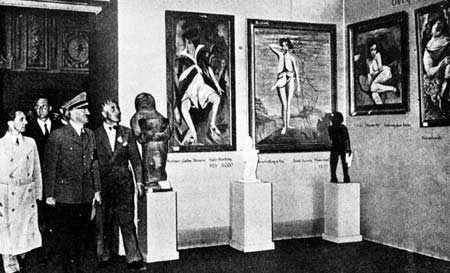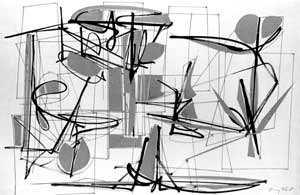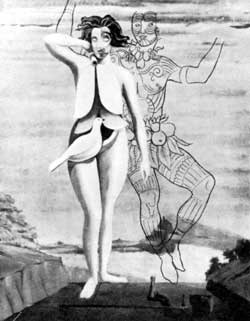 |
 |
 |
 |
 |
 |
 Max Ernst as Jesus, painted by his father, Philipp Ernst |
"...The Ernsts were a prominent family in Brühl. Philipp was the principal of a state-run school for deaf-mutes, but his real passion was painting. Apart from commissioned portraits, he produced very beautiful landscapes and skilled copies of sacred paintings, particularly those from the Vatican. In a copy of Raphael's Disputa Ernst Senior is said to have substituted faces of friends and fellow Catholics on Christ's right and those of Protestants and "non-believing" friends on his left. Philipp Ernst ... used Max as model for a painting of the young Jesus..." |
|
|
|
|
|
"...Not
far from this place, in an open square, I noticed, on a clammy fall
day, a number of trailers with a line of people waiting for admission
to them. It was the traveling exhibition of "degenerate art" that had
been organized by the Ministry of Culture at the insistence of Hitler
to show the Germans what Kultureller Bolschewismus was all about.
As I entered, I recognized immediately some of the old friends who at one time or another had visited the apartment in Cologne, and others whose works I knew from my mother's library: Klee, Yankel Adler, Chagall, Pechstein, Beckmann, Davringhausen, Hofer, Kandinsky, Franz Marc and, to my secret delight, Max Ernst. His painting hung in a special section entitled "Insults to German Womanhood," and it seemed to be the most crowded room of all. Max's La Belle Jardinière had a prominent place between Ernst Kirschner and Otto Dix. It was a magnificent painting from 1923, and strangely enough it is one of the few works from that infamous exhibition that may very well have been burned..." |
 Adolf Hitler, Josef Goebbels, and Professor Ziegler view the exhibition of "degenerate art", Munich 1937 |
|


